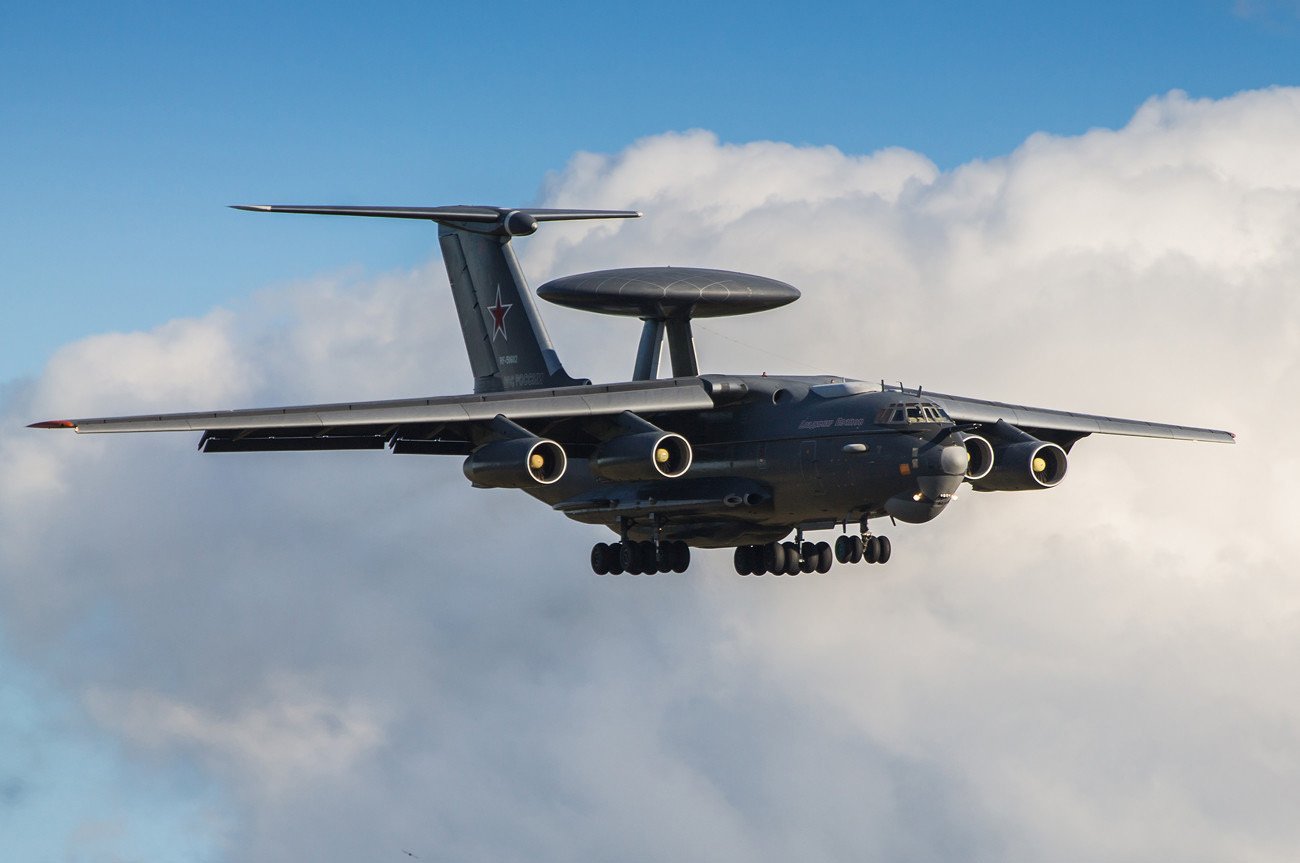Russia needs to urgently fill the early warning gaps that its Aerospace Forces face in the Ukraine war due to the recent shootdowns of two of its AWACS. Will it go for the retrofitting – a time-consuming affair — of its An-12s?
A solution being suggested to meet Russia’s desperate need for Airborne Warning and Control System (AWACS) aircraft after the third overall loss of an A-50U is retrofitting available Antonov An-12s with Su-35’s IRBIS-E Passive Electronically Scanned Array (PESA) radars.
While the scale, range, and scope of coverage would be limited, such an exercise will cover a significant length of the nearly 700 km battlefront and alleviate a lot of early warning gaps the Russian Aerospace Forces (RuAF) has been facing.
A lot, however, depends on how quickly Russian industry can manufacture IRBIS units. Will the Russian Air Force use available spare radars if the fresh manufacturing route is avoided? And, if the spare ones are meant for additional Su-35S units that will be part of a larger fleet that the RuAF plans to acquire, what will the Russian move be?
Russian defense observers with ties to the Kremlin have claimed that such a plan had informally floated around a year ago since the need for more AWACS grew acute. Russia lost its first A-50U on February 26, 2023, at Belarus’s Machulishchy air base when Ukraine flew and landed an explosive-laden drone on its radar disc, causing it to sustain serious damages.
The second A-50U was lost on January 14, and the third on February 23 this year, both over the Sea of Azov. Russia has between eight to nine such A-50U units. The A-50U can detect a missile launch at a distance of 800 km and “an enemy fighter at a distance of over 300 km,” according to TASS.
Ad-Hoc AWACS with Fighter Radar
There have been indications in Russian media that the upgrade program for the existing A-50 to A-50U standards is taking time. Moreover, only one unit of the new A-100 exists, which is the most modern current generation AWACS, which too, is undergoing testing.
Russia, therefore, needs an ad-hoc AWACS, albeit with limited capabilities, which can meet the capability gap. “Almost a year ago, a proposal was voiced to create an AWACS based on the An-12 military transport aircraft or the Tu-154 passenger aircraft that are in service and in storage,” said Russian Telegram Channel ‘Vysokygovorit.’
The aircraft can receive the N035 Irbis-E radar from the Su-35 “since it is serially produced,” making available a batch for retrofitting. “At least a dozen such aircraft” can be created.
Such a system will have disadvantages, mainly that a fighter aircraft radar cannot be placed in a ‘dish’ above the fuselage of the A-50. Even an enlarged nose cone, like the Israeli Phantom system, will leave a “significant dead zone.” Placing a second radar in the tail may help, which is “better than no solution at all.” Dozens of such aircraft are required since “it is not possible to increase the production of A-50Us or A-100s to such numbers in the coming years,” Vysokygovorit added.
‘Kramnikcat,’ another Telegram channel, said that radars from Su-35s under repair can be removed for the duration of their repairs and installed on the An-12.
The plan will entail constructing specialized control stations to be placed inside the plane’s cargo compartment for operators to be seated there. These could number anywhere between four to six.

China Uses An-12 Copy For Its AWACS
If the modifications are undertaken, the new An-12s could look somewhat like the British Nimrod airborne early warning (AEW) aircraft. Interestingly, the An-12 has been suggested since China’s KJ-200 AWACS flies on the Shaanxi Y-8, a derivative of the original Russian aircraft.
Kramnikcat said such a project could produce “six to eight aircraft” a year with a “loitering duration of about 8 hours, and a complex of equipment sufficient to detect the vast majority of targets in a given theater of operations.”
The numbers could rise to “more than a dozen” in two years and would also put the An-12s to good use before they are “sent to the cemetery.”
- The author can be reached at satamp@gmail.com
- Follow EurAsian Times on Google News




